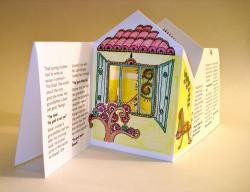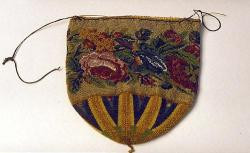Philippa Rappoport
I work in education and engagement, teacher professional development, and outreach at the Smithsonian Office of Educational Technology (OET), and have a particular interest in developing and producing trainings, programs, teaching techniques, and platforms that foster deep learning and contribute knowledge to improve practices in museum and preK-16 education and engagement. At OET over the last decade+, I created digital assets for schools, families, and new immigrant English Language learners to complement teacher professional development and pan-Smithsonian programming, including Learning Lab teaching collections, YouTube videos with tradition bearers, a handmade family stories book-making website, and online heritage tours.
Philippa Rappoport's collections
Joseph Stella in the Smithsonian collections
 Philippa Rappoport
Philippa Rappoport
Dolores Huerta: Images, Videos, and "One Life" Exhibition
 Philippa Rappoport
Philippa Rappoport
Community Engagement and Heritage Best Practices Lecture Series
 Philippa Rappoport
Philippa Rappoport
Asian Pacific American Heritage Month Family Day: Performances, Demonstrations, Interviews
 Philippa Rappoport
Philippa Rappoport
Asian Pacific American Arts and Crafts: Festival Highlights
 Philippa Rappoport
Philippa Rappoport
Raven Steals the Sun: A Celebration of Tlingit Culture
 Philippa Rappoport
Philippa Rappoport
From Deer to Dance: How-to Demonstrations and Informational Videos
 Philippa Rappoport
Philippa Rappoport
How to Make a Ti Leaf Lei: Demonstration video, children's stories, dances, and contextual images
 Philippa Rappoport
Philippa Rappoport
Native American Beading: Examples, Artist Interview, Demonstration and Printable Instructions for Hands-on Activity
 Philippa Rappoport
Philippa Rappoport
A Classroom or Family Project: "Today I Am Here," with examples of student work
 Philippa Rappoport
Philippa Rappoport
Native American Ledger Art: Informational Video and Classroom Activity
 Philippa Rappoport
Philippa Rappoport
A "Family Lessons" Storybook Activity for the Classroom or Home, with examples of student work
 Philippa Rappoport
Philippa Rappoport





















